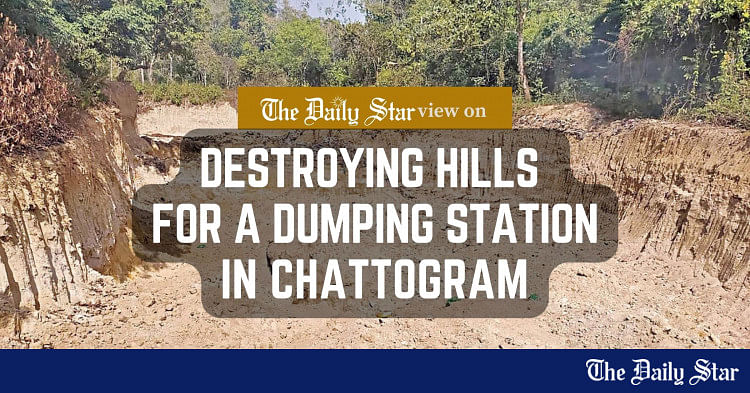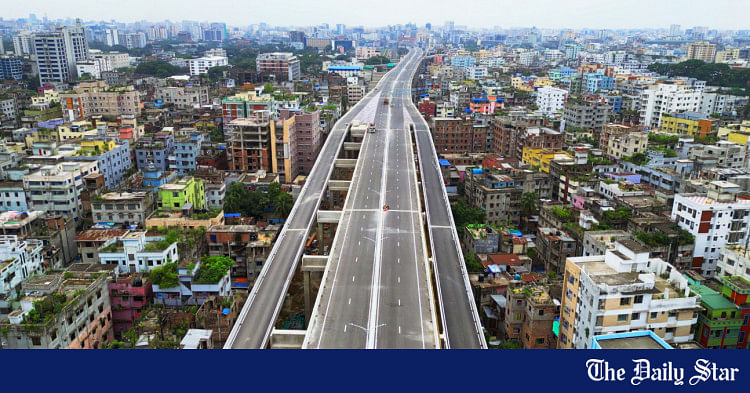- Copy to clipboard
- Thread starter
- #16
Saif
Senior Member
- Messages
- 14,206
- Reaction score
- 7,467
- Origin

- Residence

- Axis Group


Chattogram keeps losing its hills to greed
What are the relevant agencies doing about it?
Chattogram keeps losing its hills to greed
What are the relevant agencies doing about it?

Visual: Star
A photo on the front page of this paper yesterday showed the brutal and indiscriminate destruction of Nagin Pahar, a large hill in Chattogram. Chopped off from the top by local influentials, it has lost a large chunk of its height to make way for the construction of residential buildings. This relentless hill cutting in Chattogram has been going on for decades, destroying the natural beauty of this scenic city with devastating consequences. Apart from the loss of greenery and the habitat of hundreds of birds and plant species, when hills are cut the risk of landslides is increased, often leading to human deaths.
The spree of real estate development has taken a heavy toll on these precious hills cleared away for construction. In the last four decades, around 120 hills out of 200 have disappeared from Chattogram city. So how is this killing spree of hills being allowed to go on unabated? In 2012, despite multiple court orders to protect the hills of Chattogram area, one of which specifically mentioned those in the Akbar Shah area, a hill was cut. In 2023, a councillor of Chattogram City Corporation destroyed parts of a hill to build a primary school in the Akbar Shah area. According to a report in this paper, over several years he made plots by cutting the hills and selling them to people. He did this without any permission from the Department of Environment (DoE) which is mandatory. The DoE has filed cases against the councillor for destroying the hills. But the question is, how did he get away with it for so many years?
Unfortunately, the government bodies responsible for protecting these hills, have done precious little to prevent their demise. The Chattogram City Corporation, district administration, and the DoE seem to instead have allowed influentials to carry on cutting one hill after another. Thus, despite the persistent endeavours of environmental activists to stop hill cutting and in spite of the court's orders, the killing of hills continues.
Unless the government takes serious steps to enforce the law and hold its agencies responsible for enforcing it accountable, as well as appropriately punishes violators, we may have to witness Chattogram city being reduced to a flat land with concrete high-rises all over the skyline where once there were lush green hills.
What are the relevant agencies doing about it?
Visual: Star
A photo on the front page of this paper yesterday showed the brutal and indiscriminate destruction of Nagin Pahar, a large hill in Chattogram. Chopped off from the top by local influentials, it has lost a large chunk of its height to make way for the construction of residential buildings. This relentless hill cutting in Chattogram has been going on for decades, destroying the natural beauty of this scenic city with devastating consequences. Apart from the loss of greenery and the habitat of hundreds of birds and plant species, when hills are cut the risk of landslides is increased, often leading to human deaths.
The spree of real estate development has taken a heavy toll on these precious hills cleared away for construction. In the last four decades, around 120 hills out of 200 have disappeared from Chattogram city. So how is this killing spree of hills being allowed to go on unabated? In 2012, despite multiple court orders to protect the hills of Chattogram area, one of which specifically mentioned those in the Akbar Shah area, a hill was cut. In 2023, a councillor of Chattogram City Corporation destroyed parts of a hill to build a primary school in the Akbar Shah area. According to a report in this paper, over several years he made plots by cutting the hills and selling them to people. He did this without any permission from the Department of Environment (DoE) which is mandatory. The DoE has filed cases against the councillor for destroying the hills. But the question is, how did he get away with it for so many years?
Unfortunately, the government bodies responsible for protecting these hills, have done precious little to prevent their demise. The Chattogram City Corporation, district administration, and the DoE seem to instead have allowed influentials to carry on cutting one hill after another. Thus, despite the persistent endeavours of environmental activists to stop hill cutting and in spite of the court's orders, the killing of hills continues.
Unless the government takes serious steps to enforce the law and hold its agencies responsible for enforcing it accountable, as well as appropriately punishes violators, we may have to witness Chattogram city being reduced to a flat land with concrete high-rises all over the skyline where once there were lush green hills.














